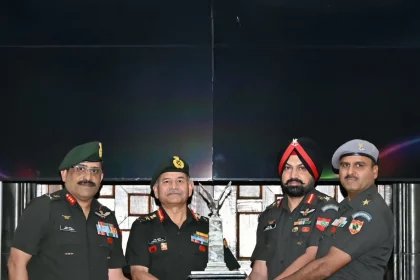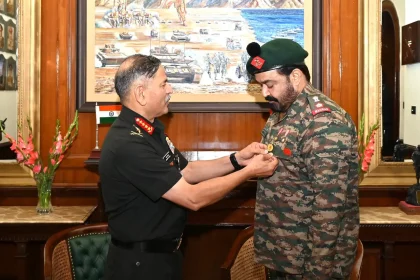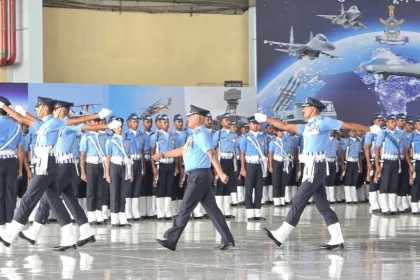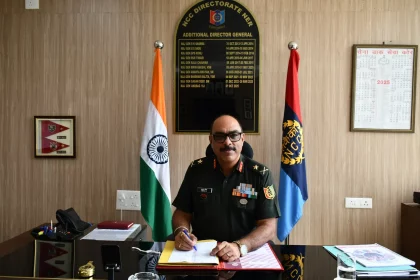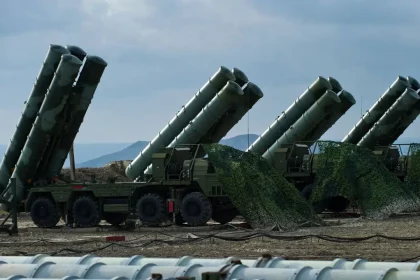667 Army Aviation Squadron and 207 Army Aviation Squadron Win Prestigious COAS Flight Safety Trophy
667 Army Aviation Squadron (R&O) emerged as the winner in the single-engine category, while 207 Army Aviation Squadron (UH) claimed…
Army Chief Felicitates Lt Col (Honorary) Mohanlal for His Contribution to Nation-Building and Support to Armed Forces
The Army Chief lauded the veteran actor for his enduring association with the Armed Forces and his efforts to inspire…
Indian Air Force Conducts Full Dress Rehearsal Ahead of 93rd Anniversary
IAF personnel showcase discipline and precision during full dress rehearsal ahead of 93rd anniversary.
Major General Anurag Vij Assumes Charge as Additional Director General, NCC Directorate North Eastern Region
Veteran Artillery Officer with 35 Years of Distinguished Service Takes Over Key Youth Leadership Role in the Northeast.
India, Russia in Talks to Acquire Five More S-400 Air Defence Systems
India, Russia discuss purchase of five more S-400 systems to strengthen air defence along northern and coastal frontiers.
India Issues NOTAM Ahead of Likely Missile Test in Bay of Bengal
Medium- or intermediate-range missile test planned in Bay of Bengal from October 15–17, following Agni-V success.

